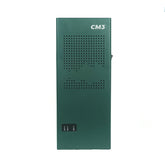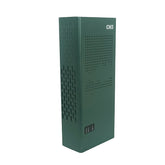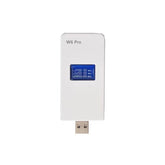Drone Jammer - An Overview of UAS Counter Technology for Drone Pilots
The drone industry is currently growing exponentially with no signs of slowing down. While this is a good thing for all relevant industries that benefit from UAVs, new technologies always bring unexpected challenges and the need for regulations.
One of the biggest challenges is really obvious: how to prevent drones from entering restricted airspace.
The FAA has done an outstanding job of moving quickly to ensure that remote pilots and the general public adapt to the phase of evolution we are currently experiencing. Needless to say, despite everyone's best efforts, the introduction of drones into commercial airspace has not been entirely smooth.
Whether intentionally or naively, there have been enough illegal incidents to necessitate counterattack technology to keep drones away from areas where security is the top priority.
In this article, we are going to discuss drone jammers for what they are, where they are used, and whether or not you should be concerned about encountering one.
What is a drone jammer?
Unfortunately, a drone jammer isn't a onesie that you put on your drone before tucking it into bed (maybe someday friends). It's also not as malicious as the name suggests, it won't freeze your props mid-flight or knock your drone to the ground (legally of course).
A drone jammer, simply put, is a machine designed to send out electromagnetic noise at radio frequencies for the purpose of neutralizing the same radio and GPS signals your drone uses to operate. The frequency of a drone jammer is usually assigned to 2.4 GHz or 5.8 GHz, which are public frequencies not assigned to manned aircraft, public broadcasts or cell phone signals.
They will often look very much like pistols and work by projecting the jammer's signal as a cone of around 15-30 degrees. When a drone is hit by the jammer's signal, the most common response is for the drone to fly back to its point of origin (unless the GPS is also blocked), giving the jammer operator the ability to track the drone to the pilot. In other cases, a drone jammer may land the drone on location in order to conduct a forensic investigation.
Rugged drone jammers on the market can operate up to several miles away and are increasingly effective the farther the pilot's remote control gets from the drone. This technology is actually a win-win solution for pilots and control agencies, as it poses much less risk than other drone countermeasures and in most situations allows the pilot's drone to remain unharmed.
Alternative countermeasures
Jamming drones by radio signal is the preferred and safest method to control unauthorized drones. However, since not all drones are purchased and built through DJI or other commercial manufacturers, there is room for more physical measurements if a drone jammer does not complete the task. Other measures used include:
Drone Net - If a drone violates a jamming signal, depending on the situation, larger drones carrying nets can be deployed to physically capture an unauthorized drone and bring it out of the sky. In this scenario, a drone falling from the sky is more likely and the pilot will likely not recover the drone in one piece, if at all. Shoot the drone - During the South Korean Olympics in 2018, security personnel had cUAS protocols to shoot rogue drones from the sky if the situation escalates. Luckily, that wasn't necessary, and instead, people will forever remember the amazing synchronized drone performance that Intel put together. Watch the video!

Where Are Drone Jammers Used?
Since drone jamming is legally limited to the federal government, current applications of the technology are reserved for high-level events and within operations directly related to the Secret Service and the military. One of the first public statements regarding signal jamming and government security occurred in 2015 after a drone crashed on the White House lawn.
A CIA official spoke to The Associated Press to find out why they missed the drone and how efforts would immediately intensify to further secure the White House grounds via signal jamming. If you haven't heard much about the specific technology and protocol involved in drone jamming, it's because the federal government has tried to preempt the rise of commercial drone use by developing its own technologies and by developing specific legislation to guarantee Safety.
The old saying goes that whatever technology we can see being used and sold by the average consumer is probably a decade or more behind what the military and government already have in development. Without dwelling too much on the philosophy of this statement, it is currently very apparent that our government is busy working on drone jamming technology that will act to protect our skies from both average commercial remote pilots and those with the intent to cause damage.













